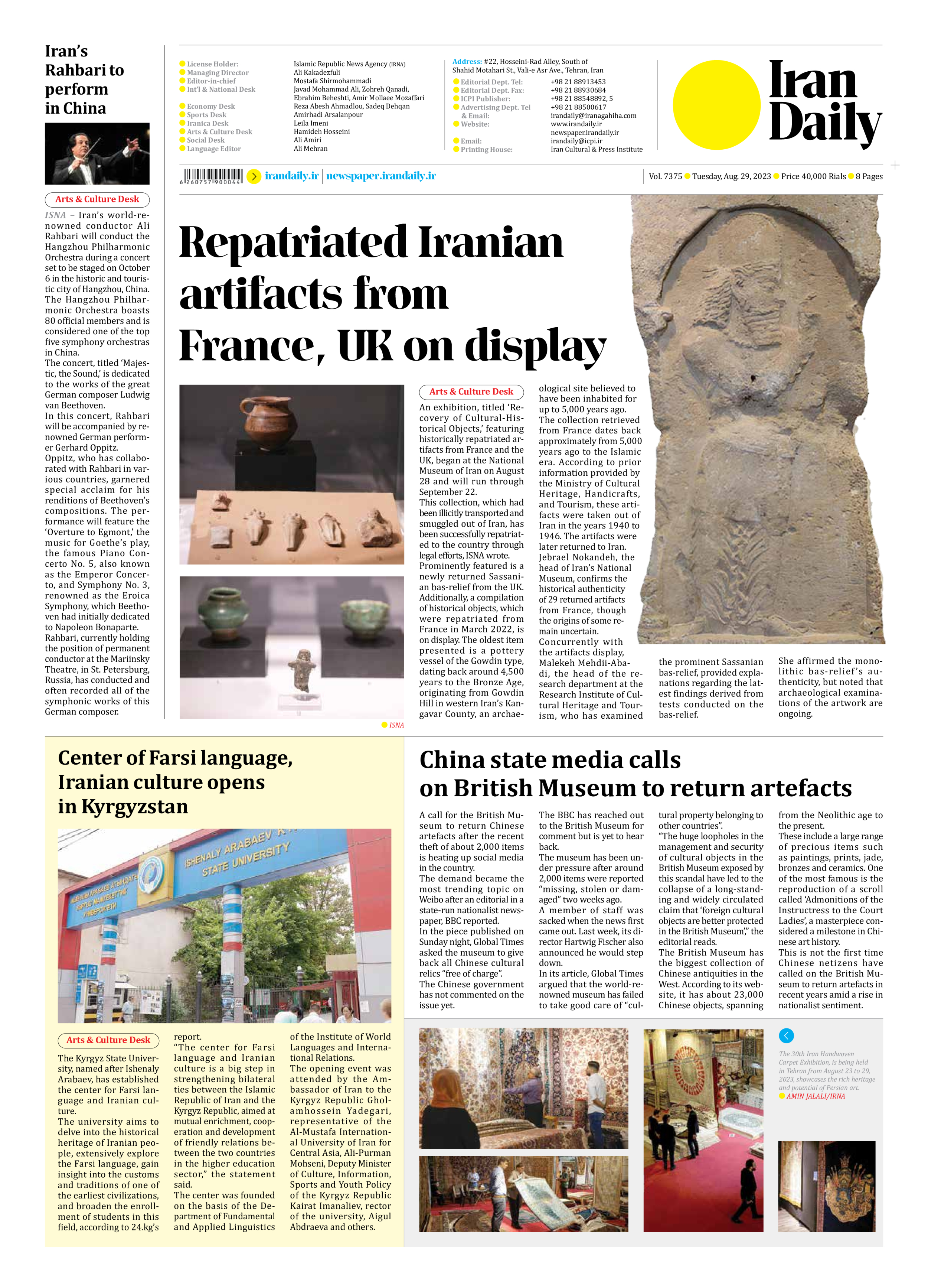
Repatriated Iranian artifacts from France, UK on display
An exhibition, titled ‘Recovery of Cultural-Historical Objects,’ featuring historically repatriated artifacts from France and the UK, began at the National Museum of Iran on August 28 and will run through September 22.
This collection, which had been illicitly transported and smuggled out of Iran, has been successfully repatriated to the country through legal efforts, ISNA wrote.
Prominently featured is a newly returned Sassanian bas-relief from the UK. Additionally, a compilation of historical objects, which were repatriated from France in March 2022, is on display. The oldest item presented is a pottery vessel of the Gowdin type, dating back around 4,500 years to the Bronze Age, originating from Gowdin Hill in western Iran’s Kangavar County, an archaeological site believed to have been inhabited for up to 5,000 years ago.
The collection retrieved from France dates back approximately from 5,000 years ago to the Islamic era. According to prior information provided by the Ministry of Cultural Heritage, Handicrafts, and Tourism, these artifacts were taken out of Iran in the years 1940 to 1946. The artifacts were later returned to Iran.
Jebrael Nokandeh, the head of Iran’s National Museum, confirms the historical authenticity of 29 returned artifacts from France, though the origins of some remain uncertain.
Concurrently with the artifacts display, Malekeh Mehdii-Abadi, the head of the research department at the Research Institute of Cultural Heritage and Tourism, who has examined the prominent Sassanian bas-relief, provided explanations regarding the latest findings derived from tests conducted on the bas-relief.
She affirmed the monolithic bas-relief’s authenticity, but noted that archaeological examinations of the artwork are ongoing.







